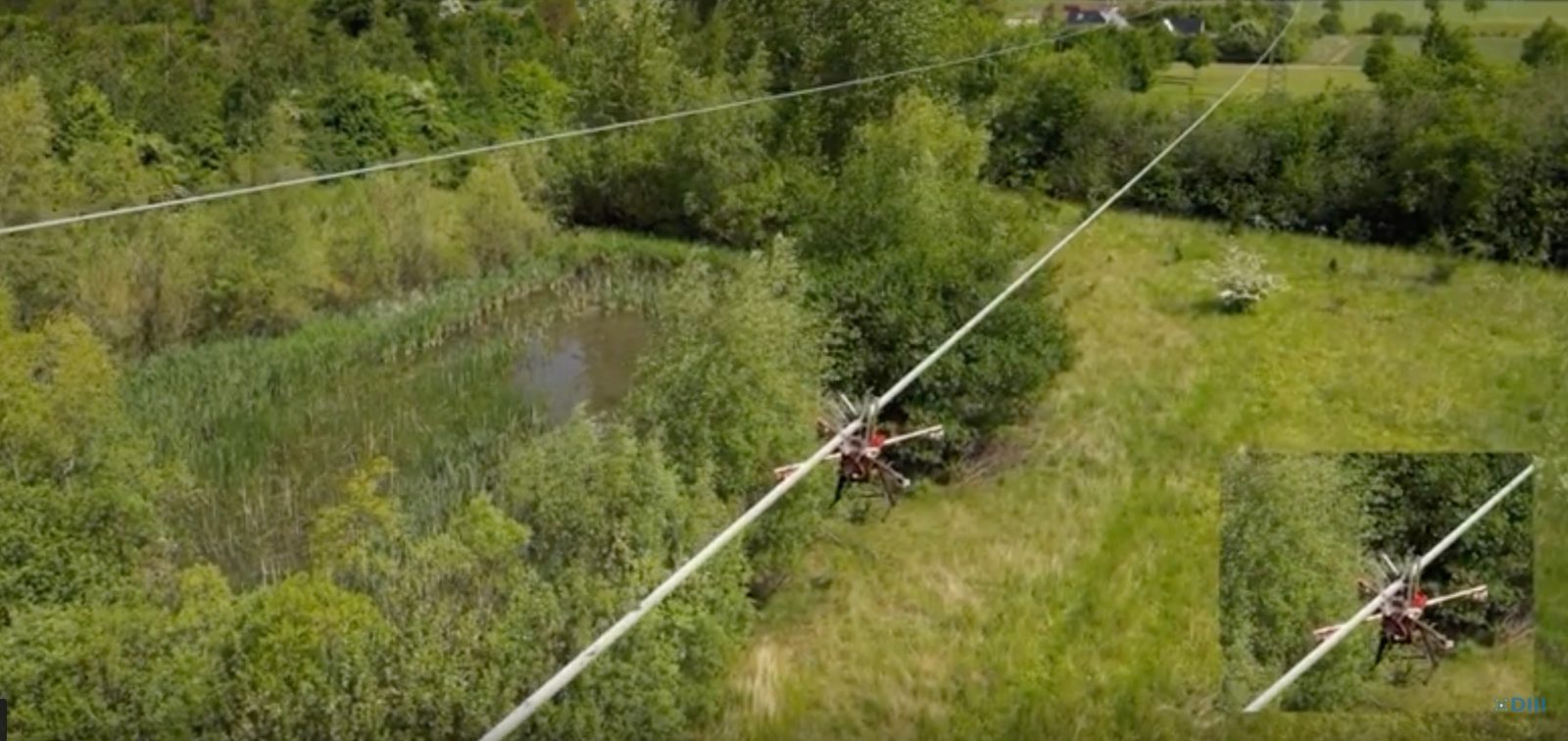
Researchers in Denmark have developed tech that may well prove revolutionary in power grid surveys – and for UAV flight capacity generally: a drone that can tap into the same power lines it is inspecting to recharge its batteries, then continue on with its mission.
The breakthrough by the team at the University of Southern Denmark (SDU) promises a solution to overcome one of the basic limitations of UAV operation – relatively short battery life – by allowing the craft to replenish its reserves while in flight. But in making self-recharging drones compatible with the high voltage power lines they’re designed to inspect, researchers hope to also permit utility companies to use UAVs for other work on electricity-transmitting infrastructure that usually must be taken offline to handle.
Read: U.S. Army to fund autonomous drone charging system study
The development will hearten private pilots and enterprise drone users who’d love a sapped battery workaround by recharging them on nearby power lines – though the jump from the SDU project to that is wide indeed. Still, its innovation tailored to energy companies may be a major game-changer for their inspection, maintenance, and repair operations, and – if the technology can be adapted to other UAVs – could pave the way for broader use.
The SDU research was undertaken with Drones4Energy, an association of Danish groups looking to develop autonomous, continuous, machine-learning operation of UAV swarms to facilitate and improve work on the nation’s 7,000 km electrical grid. In trials, inspection drones whose batteries had gotten low connected themselves directly to nearby power lines for recharging, then continued their work without having to return to their base.
In addition to the convenience and time saved, enabling the craft to make physical contact with the high voltage infrastructure will also widen their functions beyond just inspections.
The first expanded application that involves will be installation of sensors across the grid, permitting utility companies to monitor assets in real time. Placement of those devices currently requires electricity to be cut for the time it takes for them to be affixed manually – which is both slower and more expensive.
“Now we have shown that we can land on the (power) line and charge directly,” SDU researcher Emad Samuel Malki Ebeid told The Mayor. “This means that we can let swarms of autonomous drones place sensors and inspect the wires, which today must be disconnected and inspected by humans using lifts and helicopters.”
The development of self-recharging drones is expected to dramatically accelerate the installation of sensors, whose monitoring of infrastructure should in turn reduce the frequency of aerial inspections. Exportation of that tech may well follow before long, given the habitual proximity of power lines to public assets like railroads, bridges, and highways.
FTC: We use income earning auto affiliate links. More.



Comments